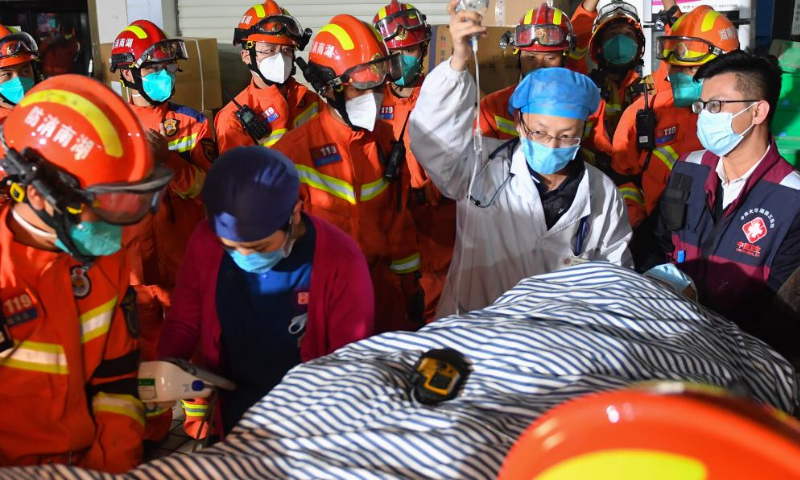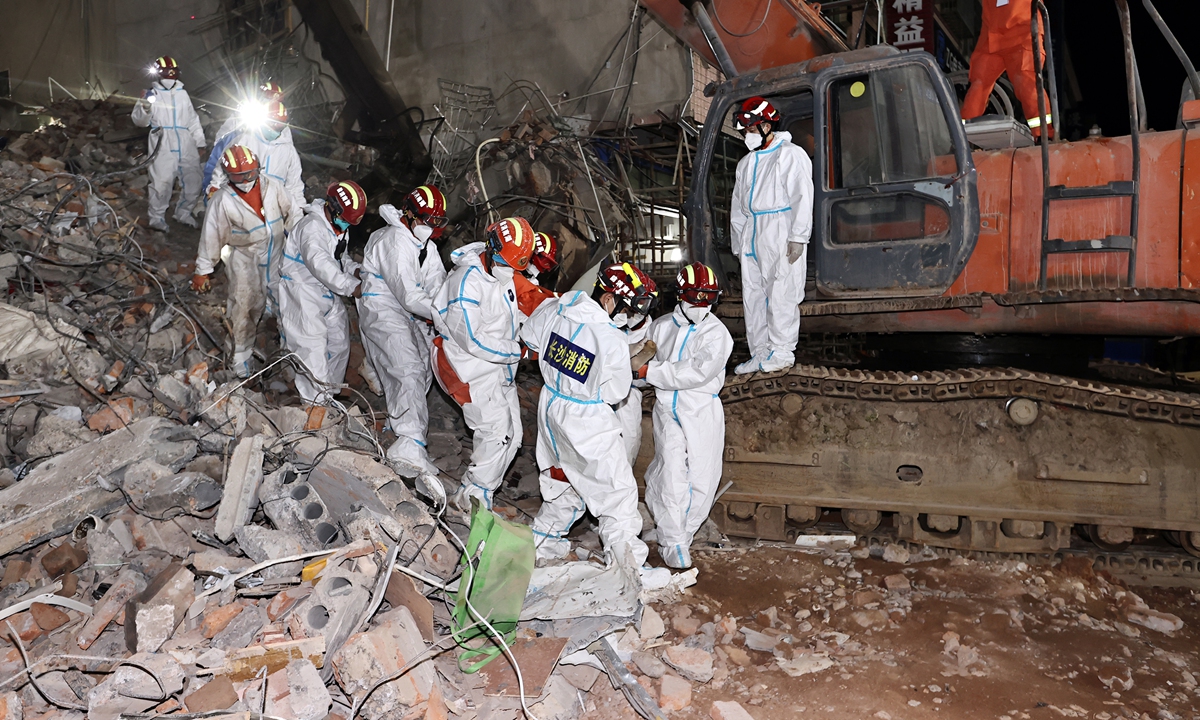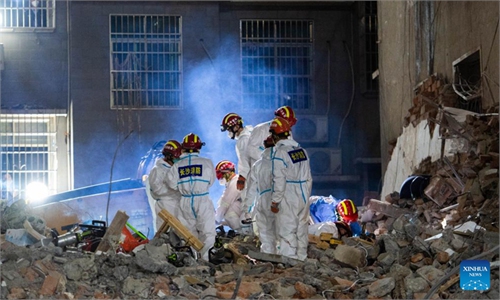China’s State Council launches investigation into Changsha building collapse, vows to deal with nationwide self-constructed structures issue

Rescuers transfer the ninth survivor who has been pulled from the rubble 88 hours after a self-built residential building collapsed in Changsha. Photo:Xinhua
The State Council of China has set up an investigation team to address the collapse of a self-constructed structure on April 29 in Changsha, Central China's Hunan Province, which has led to 53 deaths as of Friday, China Central Television reported.
Huang Ming, the minister of the Chinese Emergency Management Ministry and leader of the investigation team, said at a meeting in Changsha that the investigation team should not only conduct a thorough investigation into the incident in Changsha, but use it as an opportunity to figure out existing problems of self-constructed structures in the country and bring forward effective suggestions.
Huang urged the Hunan provincial authority to reflect on the case and take effective measures to prevent similar major accidents.
As of Friday, 10 people have been rescued and 53 others confirmed dead resulting from the collapse, local officials said at a press conference on Friday.

The tenth survivor is rescued from the debris about 132 hours after a self-built residential structure collapsed in Changsha, central China's Hunan Province, at around 12:00 am May 5, 2022.Photo:VCG
Rescue efforts linked to the collapse in Changsha have reportedly been suspended, but experts warned that the problem of self-constructed structures should not be ignored, calling for enhanced supervision and management on self-constructed structures across the country to prevent similar tragedies in the future.
At the Friday press conference, Changsha senior officials, including Wu Guiying, secretary of the Communist Party of China Changsha Municipal Committee, and Zheng Jianxin, the mayor of Changsha, bowed and expressed condolences to the victims and their families. They also apologized to the public for the tragedy.
Wu said that the collapse had caused huge loss of life, and that it was a profound lesson.
The Changsha municipal government had enhanced measures to investigate and rectify self-constructed structures in the city, officials confirmed at the press conference.

Rescuers transfer the ninth survivor who has been pulled from the rubble 88 hours after a self-built residential building collapsed in Changsha, central China's Hunan Province, May 3, 2022. A self-constructed residential building collapsed on April 29 in Wangcheng District in Changsha. Photo:Xinhua
At a press conference on Thursday, Changsha officials said they had investigated 403,359 self-constructed structures and had issued notifications to rectify these potential hazards.
Self-constructed structures are severe problems not only for Changsha, but many other cities in China. Most of these structures are located in the so-called villages in the cities and they come along with the process of urbanization, according to Li Jingguo, a researcher at the Urban Development and Environmental Research Center of the Chinese Academy of Social Sciences.
The Ministry of Housing and Urban-Rural Development of China launched an investigation in nationwide administrative villages and found more than 200 million self-constructed structures.
Some of the structures, due to lack of professional planning, construction and maintenance, often have safety problems. Some of them also involve corruption and other illegal behaviors to help the unqualified structures to fake or obtain certificates for running business, analysts noted.
For example, in the Changsha collapse case, an engineering testing company was found to issue a faked security identification report for the self-constructed structure. The company's legal representative surnamed Tan and four technical personnel have also been arrested on suspicion of providing false documents.
A major difficulty to manage these structures is the loose and irresponsible management mechanism which plagues village-level governments in China, Li told the Global Times. Li explained that, sometime officials at village-level fail to perform their duties not because they are irresponsible, but because they lack hands while facing too much pressure and work.
In addition, the owners of the structures probably typically refuse to cooperate when asked to rectify or destroy these structures, leading the issue to a deadlock on some conditions, analysts noted.
But not all self-constructed structures in China are illegal or have safety problems, making it a huge task to screen and identify them case by case. Analysts said it would be unpractical and a waste of sources to destroy all of these structures. Instead, they called for enhanced supervision and management mechanism to prevent tragedies like the Changsha collapse from happening again.
Housing and urban-rural development authorities should step up routine inspections and village-level officials should shoulder their responsibilities and deal with these cases in accordance with rules rather than rewarding friends, analysts said.
Experts also suggest setting up corresponding systems to exam and maintain self-constructed structures. Housing quality insurance systems should also be established to encourage constructers to ensure good quality of the houses and prevent safety problems.

